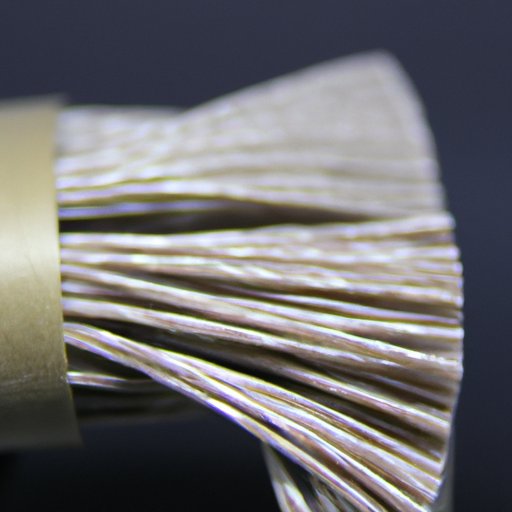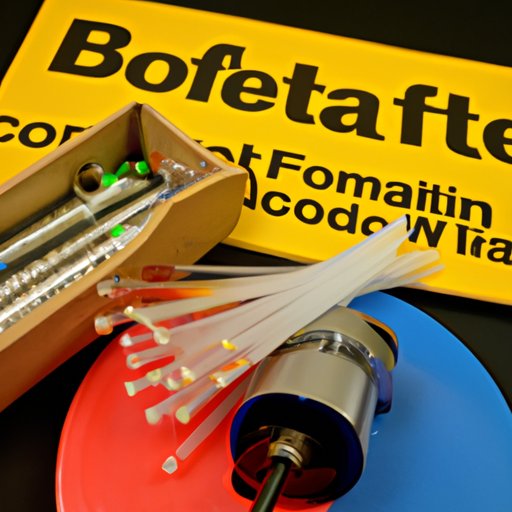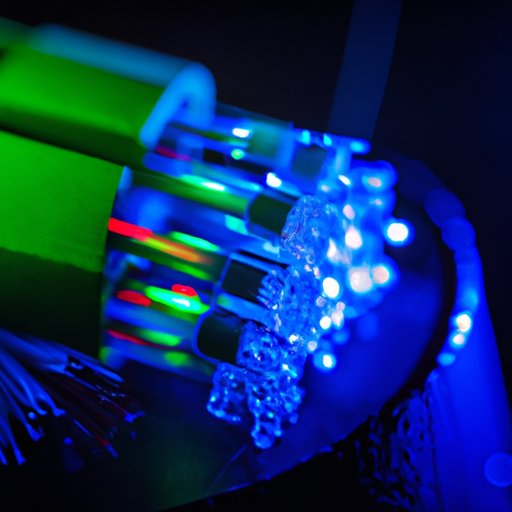Introduction
Fiber is an increasingly popular technology used for high-speed internet connections. But what exactly is fiber and how does it work? In this article, we’ll explore the science behind fiber and provide a comprehensive guide to understanding how fiber works. We’ll discuss the advantages of fiber over other technologies, different networking technologies enabled by fiber, and how fiber makes high-speed internet possible.
Exploring the Science Behind Fiber: How Does It Work?
The first step in understanding how fiber works is to explore the basics of fiber optics. Fiber optics is a technology that uses light signals to transmit data through glass or plastic fibers. These fibers are composed of tiny strands of glass or plastic, each as thin as a human hair, that are arranged into cables.
There are two types of optical fibers: single-mode and multi-mode. Single-mode fibers have a smaller core, allowing for the transmission of higher bandwidths. Multi-mode fibers have a larger core, allowing for the transmission of lower bandwidths. Both types of fibers use light signals to send and receive data, but single-mode fibers are better suited for long distance transmissions due to their increased bandwidth.
So how do light signals travel through fiber? Light signals travel at the speed of light through the fiber cables. When the light signal reaches the end of the cable, it is converted back into electrical signals that can be read by computers and other devices. This process allows for fast, efficient data transfer across large distances.

A Guide to Understanding How Fiber Works
Now that we’ve explored the science behind fiber, let’s look at some of the advantages of fiber over other technologies. Fiber offers faster speeds than copper wire and is more reliable than wireless connections. It also has less interference from environmental factors like weather and electromagnetic fields.
Different networking technologies use fiber to enable faster data transfer speeds. Ethernet over fiber is a technology that uses fiber cables to connect computers and other devices to a network. Passive Optical Networks (PONs) are networks that use fiber cables to connect multiple users to the same network. Wavelength Division Multiplexing (WDM) is a technology that uses multiple fibers to increase the capacity of a single fiber cable.
How Fiber Optics Make High-Speed Internet Possible
Fiber makes high-speed internet possible by improving connectivity and bandwidth. Fiber cables are thinner and lighter than copper wires, making them easier to install and maintain. They also have a higher bandwidth capacity, which allows for faster data transfer speeds.
Using fiber for data transfers has several benefits. Fiber is more secure than other technologies, since it is not vulnerable to interference from outside sources. It is also more efficient, since it requires less power to operate. Finally, fiber is more cost-effective than other technologies, since the cables are cheaper and last longer.
Fiber vs Cable: What You Need to Know About Internet Connections
When it comes to internet connections, there are two main options: fiber and cable. Each option has its own pros and cons. Fiber is faster than cable and has a higher bandwidth capacity, but it is more expensive to install and maintain. Cable is cheaper and easier to install, but it is slower and has a lower bandwidth capacity.

An Overview of Fiber Networking Technologies
Now that we’ve discussed the basics of fiber and how it works, let’s take a look at some of the networking technologies enabled by fiber. Ethernet over fiber is a technology that uses fiber cables to connect computers and other devices to a network. Passive Optical Networks (PONs) are networks that use fiber cables to connect multiple users to the same network. And Wavelength Division Multiplexing (WDM) is a technology that uses multiple fibers to increase the capacity of a single fiber cable.
The Future of Fiber: What’s Next for Data Transfer Speeds?
As fiber technology continues to develop, new developments are being made in order to improve data transfer speeds. For example, researchers are working on ways to reduce the amount of energy needed to transmit data, which could lead to faster speeds and greater efficiency. They are also exploring ways to increase the capacity of existing fiber cables, which could lead to even faster data transfer speeds.
However, there are still some challenges facing fiber networking. The cost of installing and maintaining fiber cables is still relatively high, which can be a barrier for some businesses and individuals. Additionally, fiber cables are vulnerable to physical damage, which can lead to costly repair bills.
Conclusion
In conclusion, fiber is an increasingly popular technology used for high-speed internet connections. By exploring the science behind fiber, we can understand how light signals travel through fiber cables and how fiber makes high-speed internet possible. We can also see the advantages of fiber over other technologies, such as its improved security and cost-effectiveness. Finally, we can look ahead to the future of fiber and the new developments in fiber technology that will help to improve data transfer speeds.
(Note: Is this article not meeting your expectations? Do you have knowledge or insights to share? Unlock new opportunities and expand your reach by joining our authors team. Click Registration to join us and share your expertise with our readers.)
